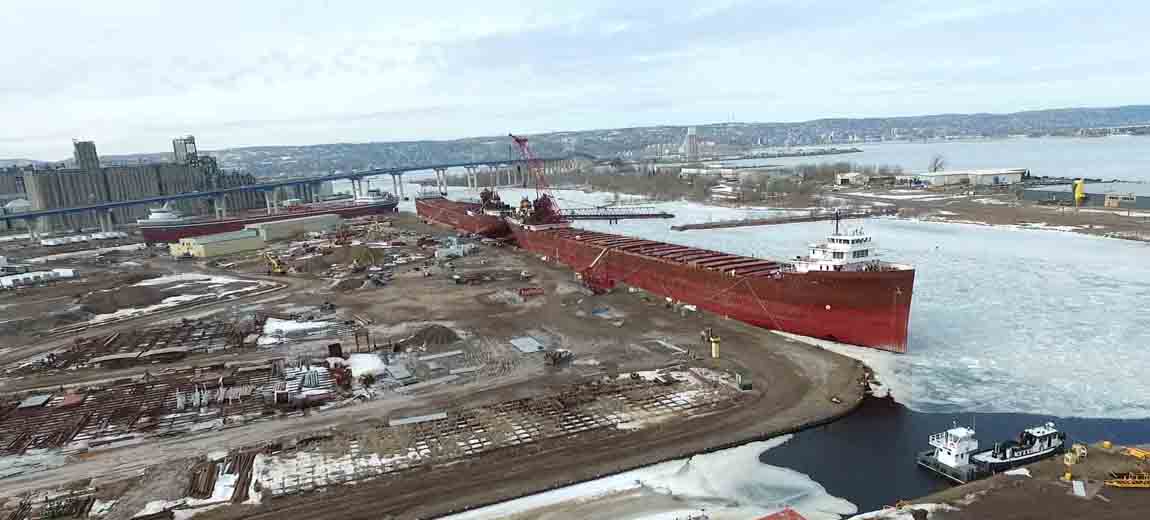As the weather begins to warm up and the snow begins to melt, another rite of spring begins in Minnesota — the shipping season starts on the Great Lakes. The giant ships locked in Duluth-Superior Harbor during the winter months return to the lake, passing under one of the most iconic landmarks in the state: the Aerial Lift Bridge.
Most of the ships are not new to those dedicated to tracking the ships that come and go. Known as “lakers,” the average ship is 40-50 years old with some older than that. And they are massive, ranging from two football fields in length (600-700 feet) to three football fields (1000 feet). In spite of their age, they are very efficient. A ship can move a ton of freight (whether its mining products like taconite from Northern Minnesota to agricultural ones such as corn and soybeans) over 600 miles on one gallon of fuel.
So how does a ship that’s so old with such heavy cargo keep working? They are well-maintained. The ships that come in Duluth-Superior Harbor are worked on by the boilermakers of Local 647 throughout the winter. They brave the cold conditions that occur even inside the ship (sometimes the temperature dips to minus 20) to make needed repairs. They do a wide variety of things, from replacing floors to repairing cargo holds and conveyor belts and even replacing engines. The boilermakers’ involvement doesn’t stop at the water’s edge. They often travel with a ship to its destination port, repairing and keeping its parts functioning.
Rarely does a laker sink on the Great Lakes. (The last one was the SS Edmund Fitzgerald in 1975.) The reason is the professionalism of the crews and the trades people who keep the ship running: the boilermakers. Thanks to Local 647 for keeping freight flowing and for keeping these vessels in ship shape.




